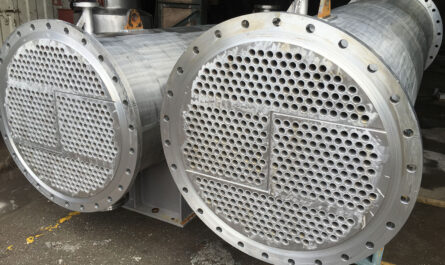Introduction to OTN Technology
An Optical Transport Network (OTN) uses optical networking techniques to handle digital signals associated with higher bitrates and manage whole wavelength division multiplexing system. OTN is built on Synchronous Optical Networking (SONET) and Synchronous Digital Hierarchy (SDH) transport technologies and uses optical switching, multiplexing, management, and supervision functions to transmit and manage digital signals over optical fiber. By leveraging optical fiber capacity through dense wavelength-division multiplexing (DWDM), it enables the delivery of consolidated services within and between networks.
OTN Architecture and Key Components
The key components of an OTN include:
– Optical channel data unit (ODU): It encapsulates client signals such as Ethernet, IP, and optical channel payloads. ODUs like ODU0, ODU1, ODU2, ODU3 etc. are standardized to transport client signals of varying speeds such as 1.25Gbps or 10Gbps.
– Optical channel signal (OCh): It multiplexes lower-order ODU signals and transmits them as an optical data stream. An OCh signal may contain ODU0, ODU1 etc.
– Optical channel transport unit (OTU): It encapsulates and transmits OCh signals in optical form. OTU standards such as OTU1, OTU2, OTU3, OTU4 exist to transport varying client ODU signal rates.
– Forward error correction (FEC): It encapsulates OTU frames for error correction during transmission over long distances.
– Digital section (DS): A single OTU signal may contain one or more virtual concatenated ODUs represented as a digital section container.
Benefits of OTN over WDM
Compared to traditional WDM systems, OTN provides key advantages:
– Better Control and Management: OTN provides dynamic provisioning of bandwidth, optical channel performance monitoring, fault detection and localization using digital wrapper.
– Traffic Management: It supports traffic grooming by multiplexing client signals into ODU containers. This improves resource efficiency through statistical multiplexing.
– Service Transparency: OTN transports any client signal irrespective of protocol through ODU encapsulation without modification.
– QoS Support: Features like synchronized Ethernet, synchronization status messaging, and protection switching support quality of service.
– Higher Scalability: OTN uses larger and standardized containers like OTU4 bringing overall higher scalability compared to WDM systems.
OTN Applications
Some major applications of OTN include:
– Data Center Interconnect: Optical Transport Network with its higher capacities provided by OTU4 is well-suited for connecting large data centers and cloud service provider networks.
– Mobile Backhaul: It is an ideal solution for the transport of 4G/5G wireless mobile backhaul traffic with QoS capabilities that these services require.
– Carrier Ethernet Transport: Native Ethernet support in OTN allows efficient transport of carrier Ethernet services.
– video/Cable Networks: Features like sub-wavelength services, synchronization make it a good transport for HDTV and cable television networks.
– Long Haul Terrestrial Networks: OTN considerably reduces operational costs of long-haul terrestrial networks by provisioning dynamic circuits flexibly.
Evolution of the OTN Standard
The OTN standard evolution is driven by ever increasing networking demands:
– OTU1 (2.7 Gbps) was introduced in the ITU-T G.709 v1 standard (2003) targeting SDH/SONET traffic.
– OTU2 (10 Gbps) and OTU1e (11.1 Gbps) standardized in G.709 v2 (2006) for 10 Gigabit Ethernet.
– Flexible OTN, OTU3/OTU3e (43/44.6 Gbps), and OTU4 (111 Gbps) were added in G.709 v3 (2011) to support 100 Gigabit networks.
– Beyond 100 Gigabit transport, 400 Gigabit OTN by jointly coding multiple OTU4/OTUCn streams using techniques like probabilistic shaping was introduced in ITU-T G.709v4 in 2016.
– ITU-T G.709v5 (2018) standardized flexible grid OTN to support non-standardized bitrates, burst mode traffic, and elastic optical networking.
Future Outlook of OTN
While OTN has become the predominant transport technology today, several advancements are envisioned:
– Increased Network Programmability: Use of SDN and telemetry interfaces will make OTN networks more programmable and automation-friendly.
– Integrated with Packet Optical: Convergence with packet-optical transport will provide seamless overlay switching capabilities on OTN infrastructure.
– QoT-aware Networking: Quality-of-transmission monitoring techniques will enable transmission quality-aware networking on OTN in the future.
– Disaggregation and Openness: Adoption of open line systems and disaggregated deployments will potentially lower costs.
– Flexibility and Granularity: More flexible and granular transport of client services right up to sub-wavelength level will be supported.
*Note:
1. Source: Coherent Market Insights, Public sources, Desk research
2. We have leveraged AI tools to mine information and compile it




